Castor And Pollux: Dioscuri Brothers Immortalized In The Night Sky In Greek Beliefs
A. Sutherland - AncientPages.com - The two bright stars, shining close together, are Castor and Pollux, two brothers who loved each other so much that they wanted to be together forever, even after death.
Credit: Adobe Stock - Daniel Eskridge
When Castor died, Pollux was in despair. He did not want to be left alone without his brother. Zeus deeply admired their brotherly love, so he set their image in the stars as twins, allowing them to spend alternative days in heaven and the Underworld.
The mythical Dioscuri brothers are identified with the Gemini Constellation and are the brightest stars in this constellation.
Born to Leda and Zeus (or Tyndareus), Castor was mortal, while Pollux was immortal. They received a strict upbringing. They were taught to run, shoot a bow, throw a javelin and spear, and tame wild stallions across the Laconian plains. They participated in lonely and dangerous expeditions and crossed precipices and wastelands.
They often fell into bare, treeless rand, grassless ravines and stone, slippery, and dangerous corridors.
This life endowed Castor and Pollux with superhuman strength and gave them immunity and good health. Growing up, they went out into the world and did tremendous things. They cleared the Aegean Sea of pirates, fought giants and monsters, and participated in heroic expeditions.
The Dioscuri, who were never separated from one another in any adventure, became the pride of Sparta. Castor was famous as a skilled soldier and tamer of horses, Pollux was famous and particularly dangerous as the boxer, and they both won prizes at the Olympic Games.
Credit: Adobe Stock - Louis Deconinck
They were models of brotherly love. It was customary not to mention them separately but as "the Dioscuri," the sons of Zeus who had some divine power in them.
Castor and Pollux grew up as two skilled athletes and warriors associated with horses. No one could beat them in chariot races.
In Greek beliefs, the two brothers were the guardians of sailors and their dangerous sea travel. In many places, especially in their native Laconia, the Dioscuri had temples and were worshiped equal to that of the gods.
The armies prayed to them before the battle, and the sailors asked for help during the storm. Later, they were also the protectors of soldiers in ancient Rome. The Dioscuri's cult moved to Rome, where they were patrons of knights. In the Roman Forum, three beautiful columns from their temple still survive.
"The Dioscuri first appeared at the Battle of Lake Regillus in 496 BC to save the new Republic. "1
They are said to have led the cavalry charge that led to the victory of the Romans over the Etruscans, and it was an essential military encounter that helped to prevent the last of the kings of Rome from regaining his throne.
The remains of the Temple of "Castor and Pollux" in Valley of the temples, Agrigento. Credit: Adobe Stock - isabela66
"Receiving a temple in the Forum in gratitude, the gods continued to play an important role in Roman life for centuries and took on new responsibilities as the needs of the society evolved.
Protectors of elite horsemen, boxers, and sailors, they also served as guarantors of the Republic's continuation and, eventually, as models for potential future emperors..." 1
The Dioscuri sister, Helena, was considered the most beautiful woman in the world, and it was for her that the Trojan War was fought, the ancient sources say.
According to ancient stories, Helen, the daughter of Zeus and Leda, was worshiped as the goddess of fertility from time immemorial. Her most famous temple stood in the town of Terapne,
a town in ancient Laconia, within the territory of Sparta, where there was a fantastic image of her, to which particularly weak and ugly children were brought so that the goddess would bestow beauty on them.
St. Elmo's fire on Masts of Ship at Sea. Unknown - in The Aerial World , by Dr. G. Hartwig, London, 1886. P. 310. Library Call Number QC863.4 H33 1886 - Public Domain
Among many legends related to Castor and Pollux, there is one about a terrible storm that suddenly appeared out of nowhere once they were on a ship. No one expected a rescue.
All of a sudden, two stars fell from heaven and settled on the heads of Castor and Pollux. Immediately, the storm passed, and the sea became calm again.
Sailors know those will-o'-the-wisps that usually light up on the tops of the masts amid a storm. In the region, they call them today the fires of St. Paul. Elma.
Another legend says that once, they visited Sparta and visited a man called Formion, who occupied their own house at times. They claimed to be on a trip and asked him to put them in a room overlooking the garden. Formion didn't want to because that's where his daughter lived. Instead, he gave them another chamber.
The Dioscuri brothers rode away angry that they were not allowed to sleep one night in their favorite nursery.
The next day, Formion's daughter disappeared without a trace, and statues of the Dioscuri were found by her bedside.
Written by – A. Sutherland AncientPages.com Senior Staff Writer
Copyright © AncientPages.com All rights reserved. This material may not be published, broadcast, rewritten or redistributed in whole or part without the express written permission of AncientPages.com
Expand for referencesReferences:
Gartrell A. The Cult of Castor and Pollux in Ancient Rome Myth, Ritual, and Society
Military History Encyclopedia On The Web
Graves, R. The Greek Myths: The Complete and Definitive Edition
More From Ancient Pages
-
 Glima – Ancient Martial Art Practiced By The Vikings Is Still Popular Today
Ancient Traditions And Customs | Mar 7, 2017
Glima – Ancient Martial Art Practiced By The Vikings Is Still Popular Today
Ancient Traditions And Customs | Mar 7, 2017 -
 How Henry VIII Accidentally Changed The Way We Write History
Featured Stories | Sep 6, 2024
How Henry VIII Accidentally Changed The Way We Write History
Featured Stories | Sep 6, 2024 -
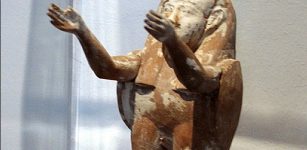 Ancient Beliefs About The Soul
Civilizations | Mar 8, 2016
Ancient Beliefs About The Soul
Civilizations | Mar 8, 2016 -
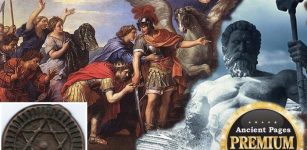 The Seal Of Solomon, The Fifth Element And The Andromeda Constellation Reveal An Intriguing Connection
Ancient Mysteries | Mar 8, 2018
The Seal Of Solomon, The Fifth Element And The Andromeda Constellation Reveal An Intriguing Connection
Ancient Mysteries | Mar 8, 2018 -
 Unexplained Accounts Of Mysterious Fires – ‘Burning’ Questions Remain Unanswered – Part 1
Featured Stories | Aug 2, 2019
Unexplained Accounts Of Mysterious Fires – ‘Burning’ Questions Remain Unanswered – Part 1
Featured Stories | Aug 2, 2019 -
 Ancient Roman Wine Production May Hold Clues For Battling Climate Change
Featured Stories | Jan 4, 2024
Ancient Roman Wine Production May Hold Clues For Battling Climate Change
Featured Stories | Jan 4, 2024 -
 Ancient Mystery Of The Before – Time People – Evidence Of Unknown Advanced Prehistoric Technology – Part 2
Ancient Mysteries | Apr 5, 2019
Ancient Mystery Of The Before – Time People – Evidence Of Unknown Advanced Prehistoric Technology – Part 2
Ancient Mysteries | Apr 5, 2019 -
 Potlatch: Ancient North American Indian Tradition Of Very Generous Gift Giving
Ancient Traditions And Customs | Sep 12, 2016
Potlatch: Ancient North American Indian Tradition Of Very Generous Gift Giving
Ancient Traditions And Customs | Sep 12, 2016 -
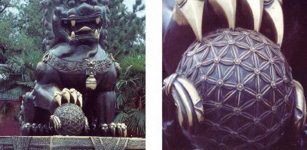 Ancient Symbol Seed Of Life Contains Hidden Secrets Of The Seven Days Of Creation
Ancient Symbols | Oct 8, 2017
Ancient Symbol Seed Of Life Contains Hidden Secrets Of The Seven Days Of Creation
Ancient Symbols | Oct 8, 2017 -
 Unexplained Historical Mass Disappearances – Lost Without Trace – Part 1
Featured Stories | May 31, 2019
Unexplained Historical Mass Disappearances – Lost Without Trace – Part 1
Featured Stories | May 31, 2019 -
 Atlit Yam – Fate Of The 9,000-Year-Old Underwater Megalithic Site With A Huge Stone Circle
Featured Stories | Jun 14, 2021
Atlit Yam – Fate Of The 9,000-Year-Old Underwater Megalithic Site With A Huge Stone Circle
Featured Stories | Jun 14, 2021 -
 Mysterious Greyfriars Kirkyard: A Cemetery In Edinburgh With Dark And Spooky History
Featured Stories | Sep 16, 2016
Mysterious Greyfriars Kirkyard: A Cemetery In Edinburgh With Dark And Spooky History
Featured Stories | Sep 16, 2016 -
 Ogdoad Of Hermopolis – Ancient Egyptian Concept Of Eternal And Primeval Forces
Egyptian Mythology | May 16, 2019
Ogdoad Of Hermopolis – Ancient Egyptian Concept Of Eternal And Primeval Forces
Egyptian Mythology | May 16, 2019 -
 Surprising End To Legend Of The Snallygaster That Terrorized Maryland And Washington
Featured Stories | Jun 1, 2020
Surprising End To Legend Of The Snallygaster That Terrorized Maryland And Washington
Featured Stories | Jun 1, 2020 -
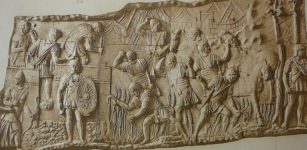 Secret Police In Ancient Rome – Frumentarii: Who Were They And What Was Their Role?
Featured Stories | Aug 12, 2019
Secret Police In Ancient Rome – Frumentarii: Who Were They And What Was Their Role?
Featured Stories | Aug 12, 2019 -
 Kindred Spirits: Why Did The Irish Build A Monument In Honor Of Native Americans?
Ancient History Facts | Oct 22, 2016
Kindred Spirits: Why Did The Irish Build A Monument In Honor Of Native Americans?
Ancient History Facts | Oct 22, 2016 -
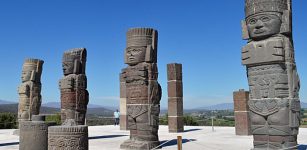 Obscure History Of Atlantean Statues In Ancient Toltecs’ City Of Tula
Artifacts | Oct 19, 2020
Obscure History Of Atlantean Statues In Ancient Toltecs’ City Of Tula
Artifacts | Oct 19, 2020 -
 What America’s First Board Game Can Teach Us About The Aspirations Of A Young Nation
Featured Stories | Jun 6, 2024
What America’s First Board Game Can Teach Us About The Aspirations Of A Young Nation
Featured Stories | Jun 6, 2024 -
 Pooka: Solitary Spirit And Not Entirely Benevolent Prankster In Irish Folklore
Celtic Mythology | Jun 4, 2016
Pooka: Solitary Spirit And Not Entirely Benevolent Prankster In Irish Folklore
Celtic Mythology | Jun 4, 2016 -
 Mighty Viking Harald Hardrada – The Last Great Viking And Most Feared Warrior Of His Time
Featured Stories | Jun 9, 2020
Mighty Viking Harald Hardrada – The Last Great Viking And Most Feared Warrior Of His Time
Featured Stories | Jun 9, 2020




